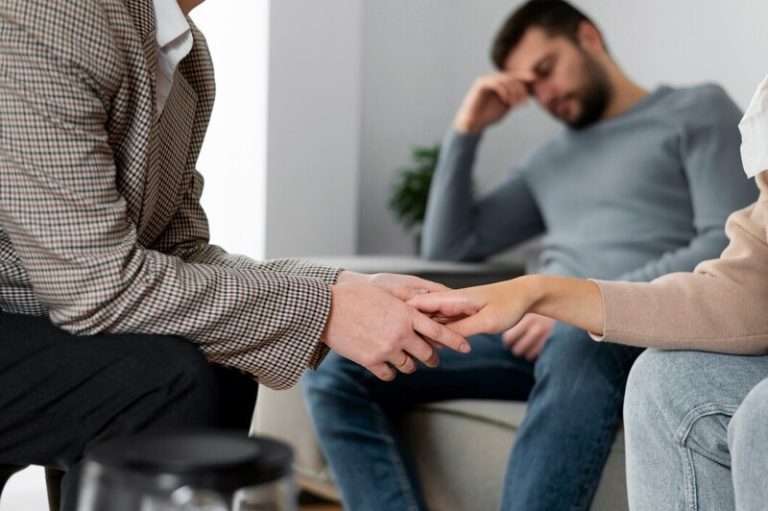The Journey of a Conversion Therapy Survivor: Navigating the Path to Healing
Conversion therapy is a practice that aims to change an individual’s sexual orientation or gender identity through various methods, often including psychological techniques and sometimes religious interventions. The harmful effects of this controversial practice have been widely acknowledged by medical and psychological professionals. For those who have undergone conversion therapy, the journey of healing can be long and painful. This article explores the emotional and psychological impact on conversion therapy survivors, their path to recovery, and the role of therapy in reclaiming their lives.
What is Conversion Therapy?
Conversion therapy, sometimes referred to as reparative therapy, is a set of practices intended to alter an individual’s sexual orientation or gender identity. These methods often rely on shaming tactics, religious counseling, or psychological manipulation to convince individuals that their natural sexual or gender identity is wrong and must be changed.
For years, conversion therapy was promoted as a solution to “cure” LGBTQ+ individuals, but it has since been discredited by mental health professionals and condemned by organizations such as the American Psychological Association (APA) and the American Medical Association (AMA). Despite this, conversion therapy continues to be practiced in certain regions, leaving conversion therapy survivors to cope with the trauma it causes.
The Emotional and Psychological Toll on Conversion Therapy Survivors
For conversion therapy survivors, the psychological scars can be deep and long-lasting. The emotional toll is often overwhelming, and survivors often find themselves grappling with a wide range of challenges long after the therapy ends.
1. Internalized Shame and Guilt
One of the most common consequences of conversion therapy is the internalization of shame and guilt. Survivors are often told that their sexual orientation or gender identity is sinful, wrong, or unnatural. This creates an overwhelming sense of shame that can persist long after the therapy ends. Many survivors internalize these negative messages, leading to chronic self-loathing and a distorted view of their worth.
2. Depression and Anxiety
Another significant impact of conversion therapy is the development of mental health issues such as depression and anxiety. The constant messages of inadequacy and wrongness can lead to feelings of hopelessness and despair. Many survivors experience chronic sadness, an inability to connect with others, and a sense of isolation. Anxiety is also common, with survivors often feeling fearful or unsafe in relationships or social situations.
3. Post-Traumatic Stress Disorder (PTSD)
For many survivors, the emotional trauma of conversion therapy is so profound that it results in symptoms similar to post-traumatic stress disorder (PTSD). Flashbacks, nightmares, hypervigilance, and emotional numbness are all common PTSD symptoms that survivors of conversion therapy may face. The trauma of being coerced into changing their identity or sexuality can haunt individuals for years.
4. Difficulty Trusting Others
Conversion therapy often involves manipulation, coercion, and betrayal, which can lead to significant trust issues. Survivors may struggle to trust others, particularly those in authority or figures of support, such as therapists or family members. These trust issues can interfere with the survivor’s ability to form healthy relationships and can prolong feelings of isolation.
5. Identity Struggles
A significant issue for conversion therapy survivors is reconciling their identity with the messages they received during therapy. Many survivors feel conflicted about their sexual orientation or gender identity, particularly if they were told that their identity was wrong or needed to be changed. This struggle can result in feelings of confusion, self-doubt, and difficulty embracing one’s true self.
The Healing Process: Steps Toward Recovery for Conversion Therapy Survivors
Healing from the trauma caused by conversion therapy is not easy, but with the right support, recovery is possible. The road to healing is personal and varies from one individual to another, but there are common steps that can help conversion therapy survivors reclaim their lives and move forward.
1. Finding a Compassionate, Affirmative Therapist
The first step in the healing journey for conversion therapy survivors is finding a therapist who is both compassionate and affirming of LGBTQ+ identities. A therapist who understands the trauma caused by conversion therapy can help create a safe, supportive environment for survivors to process their feelings and experiences.
Therapists specializing in trauma recovery can also provide effective strategies to cope with the emotional fallout of conversion therapy, including techniques for managing depression, anxiety, and PTSD. Working with a therapist who is knowledgeable about LGBTQ+ issues and trauma is essential for successful healing.
2. Processing Trauma and Overcoming Shame
A key aspect of recovery from conversion therapy is addressing the deep shame and guilt that survivors often experience. Therapy provides a safe space to process these feelings and challenge the harmful messages that were instilled during therapy. Survivors can work through feelings of self-loathing, replace negative beliefs with self-acceptance, and learn to embrace their true identity.
One of the most significant breakthroughs for survivors is realizing that their sexual orientation or gender identity is valid and valuable, and that they deserve to be loved and accepted as they are.
3. Building Healthy Relationships
For many conversion therapy survivors, forming healthy relationships can be a major challenge. The trauma of conversion therapy can create barriers to trust, intimacy, and emotional connection. However, therapy can help survivors develop better communication skills, set healthy boundaries, and heal the wounds caused by their past experiences.
By addressing issues such as fear of rejection, abandonment, or betrayal, survivors can begin to build the foundation for fulfilling, supportive relationships with others. This process can also involve reconnecting with friends, family, or the broader LGBTQ+ community to find support and validation.
4. Overcoming Internalized Homophobia or Transphobia
A critical component of healing for conversion therapy survivors is overcoming internalized homophobia or transphobia. Conversion therapy often teaches individuals to reject their identity, leading to self-hatred or discomfort with their sexuality or gender. Through therapy, survivors can learn to accept and celebrate their true selves, overcoming the negative beliefs that were instilled during the therapy.
This process may involve challenging long-held beliefs about sexual orientation or gender identity, working through internalized stigma, and fostering self-love and self-acceptance.
5. Reclaiming Power and Advocacy
A powerful part of the healing journey is reclaiming personal agency and advocating for oneself and others. Many conversion therapy survivors find strength in sharing their stories, raising awareness about the harmful effects of conversion therapy, and helping others who have been subjected to similar experiences. Advocating for change and speaking out can be empowering, both for survivors and for the broader LGBTQ+ community.
Advocacy also involves standing up against harmful practices like conversion therapy, advocating for laws that protect LGBTQ+ rights, and supporting organizations that offer resources for survivors.
Conclusion: Moving Forward as a Conversion Therapy Survivor
Healing from the trauma caused by conversion therapy is a lifelong journey, but it is one that can lead to greater self-acceptance, empowerment, and personal growth. Conversion therapy survivors face significant emotional and psychological challenges, but with the right support, therapy, and resources, recovery is possible.
If you or someone you know has experienced the trauma of conversion therapy, remember that healing is achievable. Finding a compassionate, trauma-informed therapist who specializes in LGBTQ+ issues is a critical first step toward reclaiming your identity and moving forward.
For more information and to access supportive, affirmative therapy, visit David A. Matheson. No one should have to navigate this journey alone—help is available, and healing is within reach.



